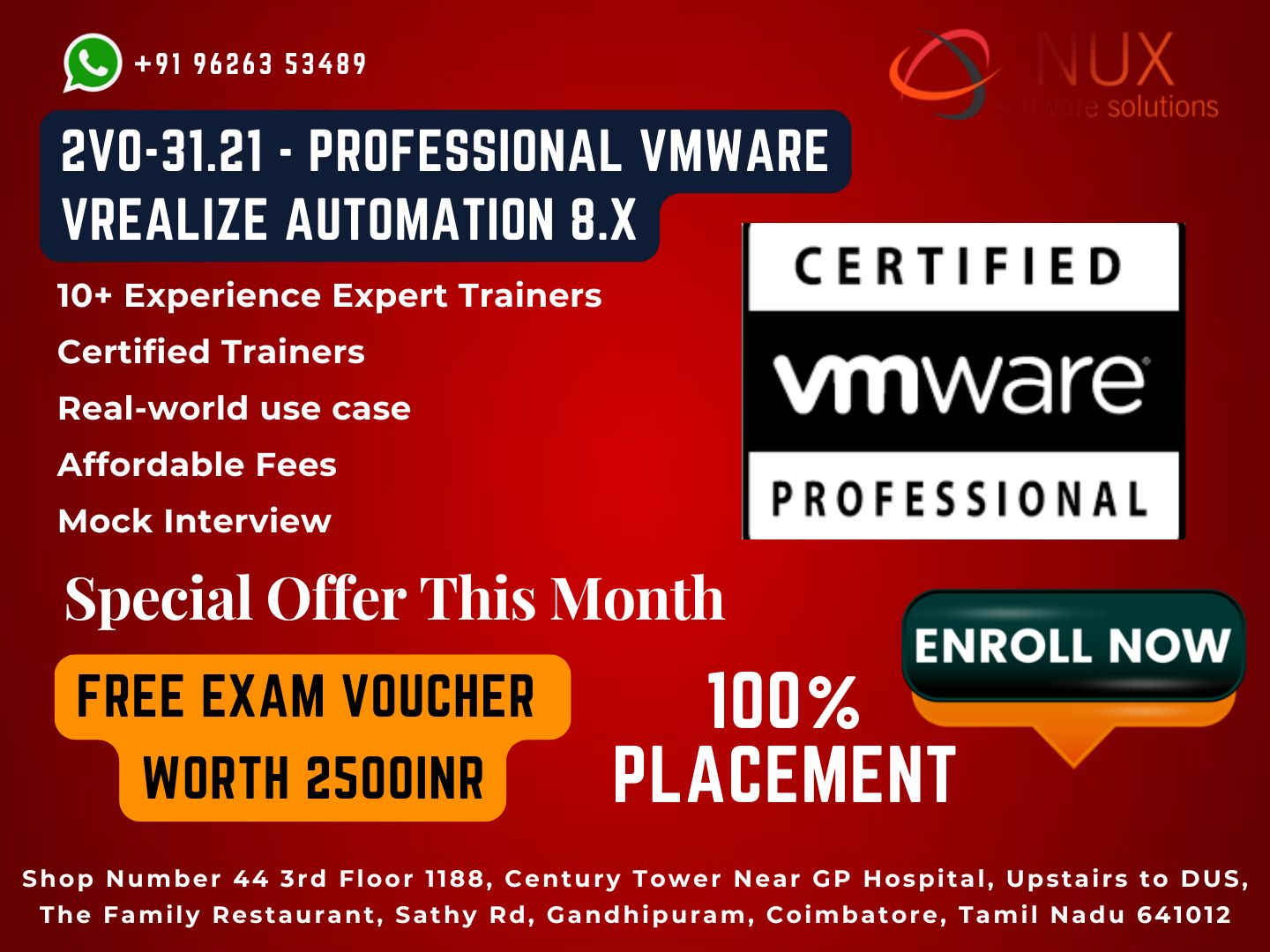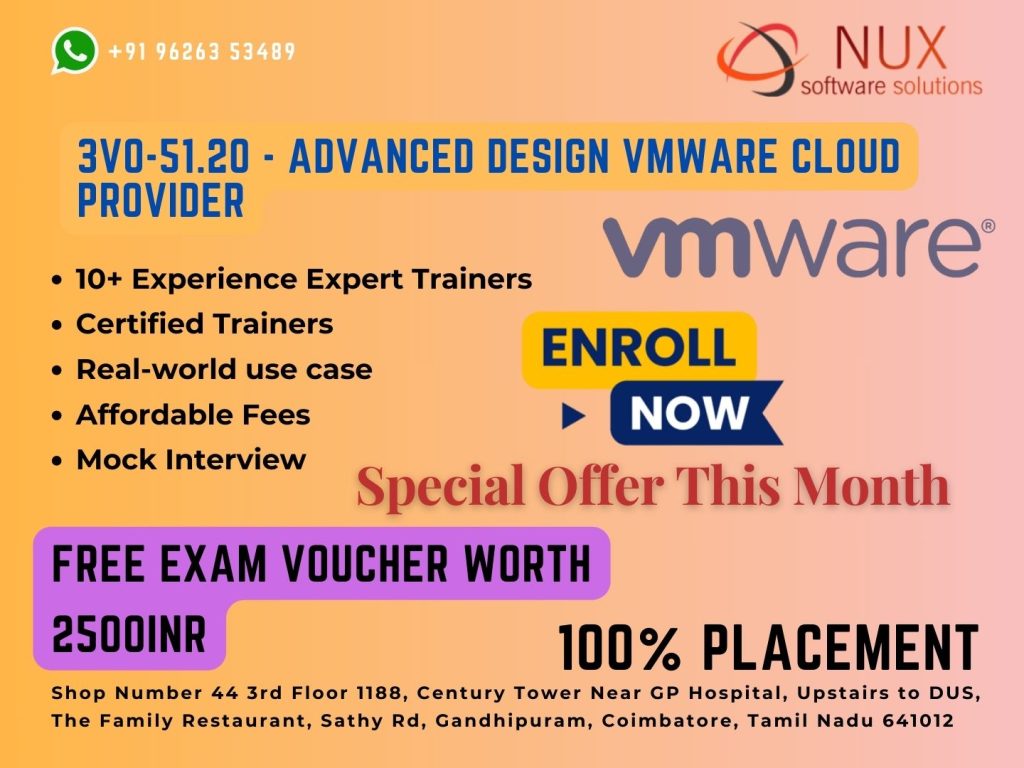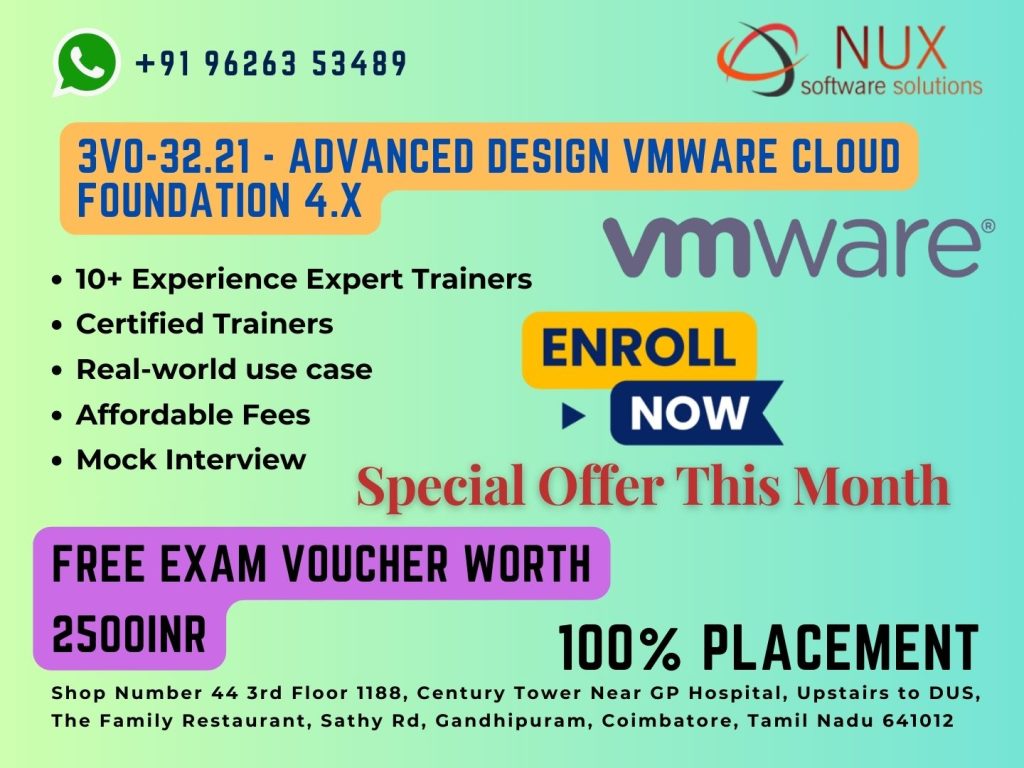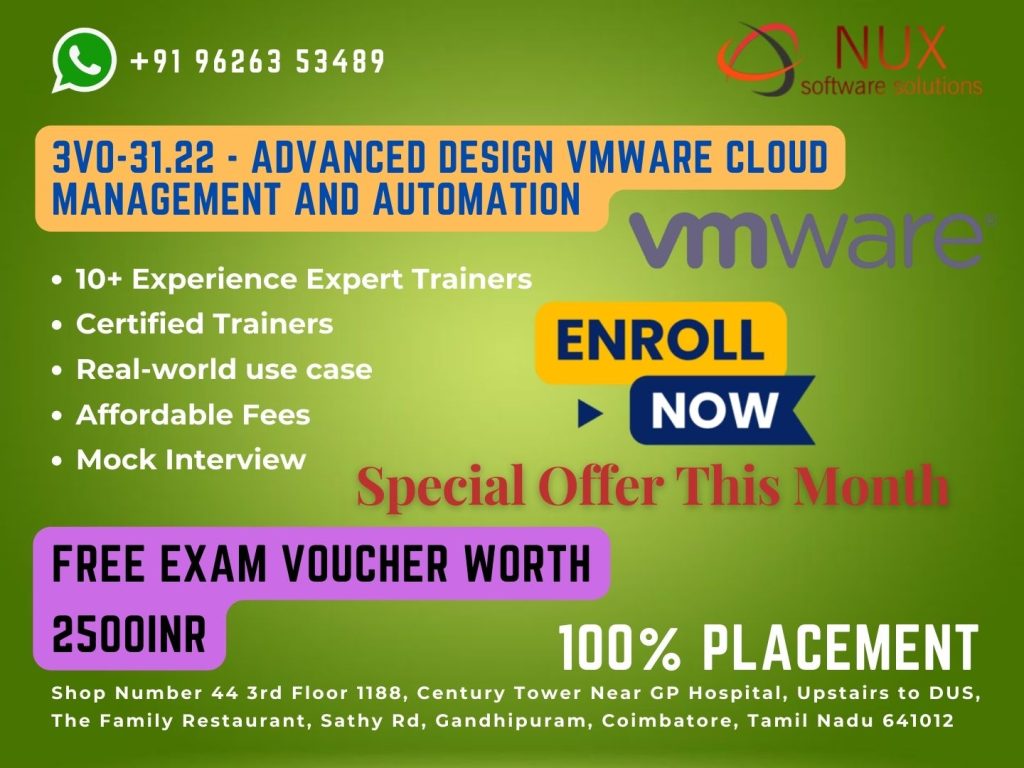Professional VMware vRealize Automation 8.x Training and Certification

Course Overview
The Professional VMware vRealize Automation 8.x training program is designed to help IT professionals and cloud architects gain hands-on skills in automating infrastructure provisioning, application deployment, and operational management using VMware vRA 8.x.
This course provides in-depth training on building modern, policy-driven self-service portals for deploying workloads across vSphere, VMware Cloud, AWS, Azure, and Google Cloud environments. It also covers integrations with vRealize Orchestrator, vRealize Operations, and external tools like Ansible and Terraform.
Why Choose This Course
Learn to design and deploy self-service cloud portals and automated workflows
Streamline infrastructure provisioning and governance across multi-cloud environments
Gain real-world experience with Cloud Templates, Service Broker, and Code Stream
Integrate with leading tools for DevOps, IaC (Infrastructure as Code), and ITSM
Prepare for roles in cloud automation, SRE, and platform engineering
Who Should Enroll
VMware administrators and cloud engineers transitioning to automation roles
DevOps professionals managing hybrid cloud infrastructure
System integrators and solution architects implementing self-service IaaS
Cloud consultants working on vRA-based private or hybrid cloud deployments
IT professionals preparing for VMware cloud automation certifications
Skills You Will Gain
Understanding vRA architecture, components, and deployment models
Designing and building Cloud Templates (blueprints) using YAML
Configuring projects, cloud zones, and image mappings
Automating deployment workflows with vRealize Orchestrator and Code Stream
Managing policies for day-2 operations, approvals, and governance
Integrating vRA with vSphere, NSX-T, AWS, Azure, GCP, and configuration tools
Career Opportunities
VMware Cloud Automation Engineer
Cloud Infrastructure Architect
Platform Automation Specialist
DevOps Engineer – Hybrid Cloud
vRealize Suite Consultant
Applicable in enterprises moving toward IT-as-a-Service (ITaaS), private cloud models, and multi-cloud environments, especially in finance, manufacturing, telecom, and IT services sectors.
Build Cloud-Aware Infrastructure That Automates Itself
VMware vRealize Automation 8.x enables organizations to simplify cloud operations while accelerating service delivery. This course equips you with the expertise to lead automation in any enterprise.
Enroll in VMware vRealize Automation 8.x Training at Linux Training Center, Coimbatore



